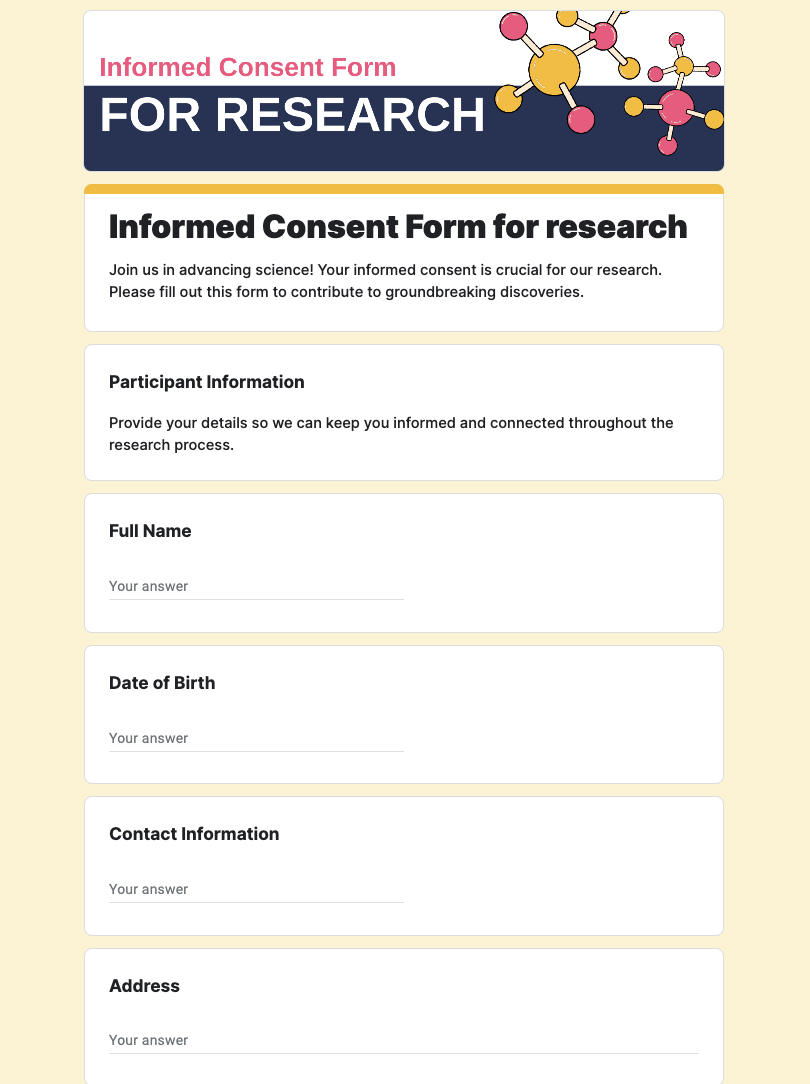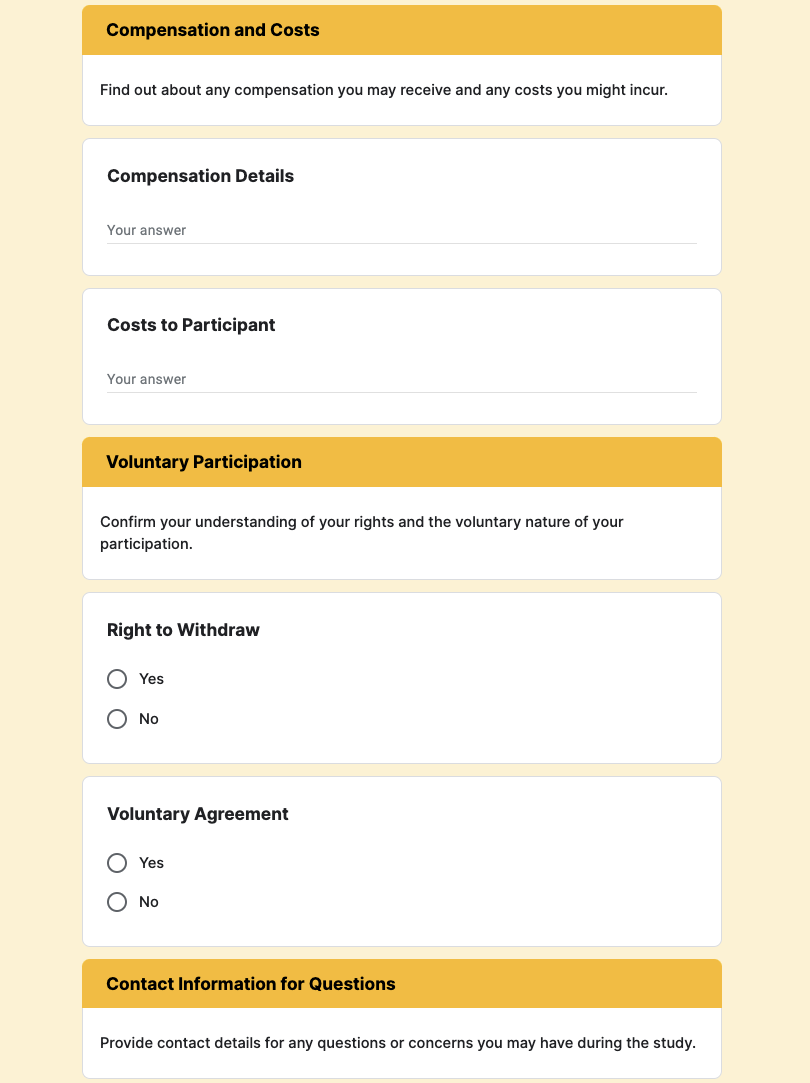Informed Consent Form in research
FREE
The Informed Consent Form for Research is essential for legal guardians or representatives to provide consent swiftly after trial entry. This form is designed to be highly customizable, allowing you to tailor it to specific research needs. It ensures secure transmission to prospects and facilitates prompt, secure responses. Crafted with user-friendliness in mind, this form is a top-tier tool for obtaining informed consent in compliance with regulatory guidelines.





